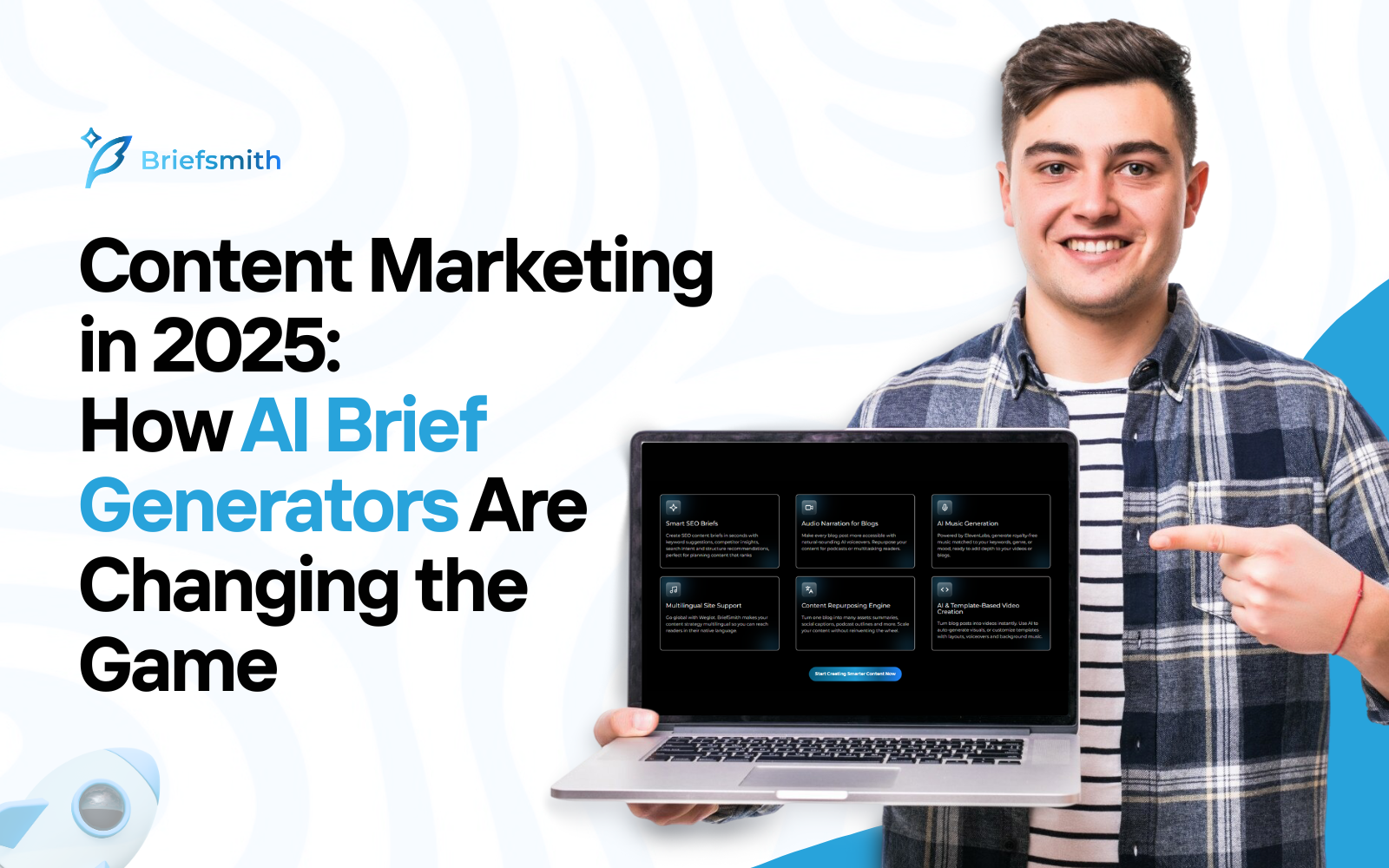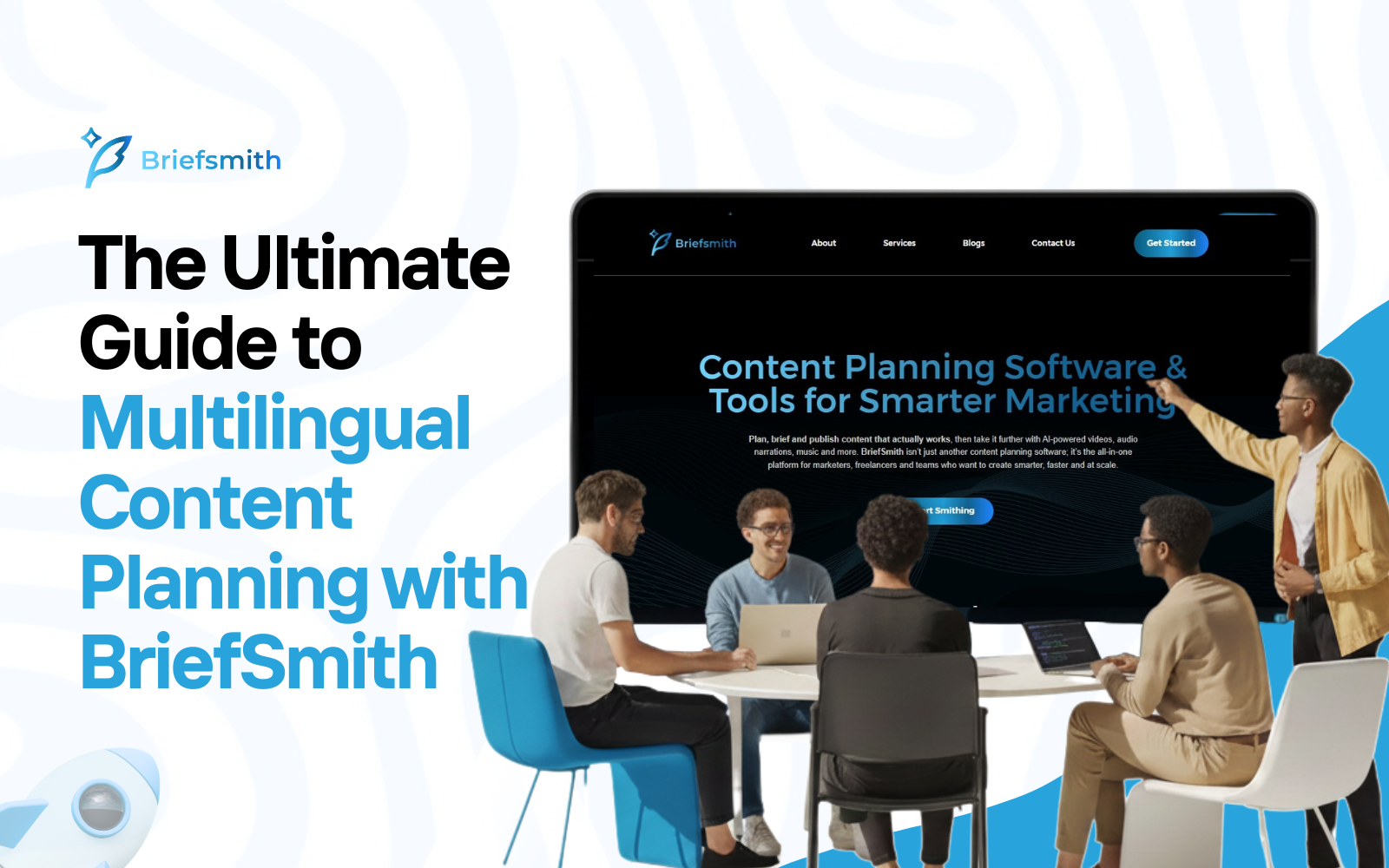Content Marketing in 2025: How AI Brief Generators Are Changing the Game

Content Marketing Is Moving Faster Than Ever
Five years ago, content marketing was simpler. You picked a few keywords, published a blog post every week and hoped it ranked. Fast forward to 2025 and the landscape looks completely different:
- Competition has tripled in almost every niche.
- Google updates keep shifting the rules of SEO.
- Audiences expect depth, not fluff.
- Content teams are asked to “do more with less.”
The problem isn’t that marketers lack ideas. It’s that building structured, SEO-driven content at scale takes too much time. This is exactly where AI brief generators are changing the game.
What Exactly Is an AI Brief Generator?
Let’s start with the basics.
A content brief is a roadmap for a piece of content. It tells writers:
- What the piece should cover
- Which keywords to target
- The structure (headings, subtopics, FAQs)
- Tone, audience and goal
Traditionally, briefs take hours to research and compile. Marketers manually dig through competitor articles, keyword tools and audience insights before writing a single line of instruction.
An AI brief generator automates that process. Using algorithms, keyword data and natural language processing, it pulls together a ready-to-use outline in minutes.
If you want a refresher on why briefs matter so much, see SEO Content Briefs: The Missing Link Between Strategy and Results.
Why AI Brief Generators Matter in 2025
1. Speed Without Sacrificing Quality
The biggest benefit is time. A task that used to take hours can now be done in minutes, freeing up marketers to focus on strategy and creativity instead of logistics.
2. Smarter Keyword Integration
AI tools don’t just spit out a list of keywords. They analyze search intent and competitor content to suggest where and how to use them in the brief.
3. Consistency Across Teams
Instead of one writer producing a highly structured piece and another going off on a tangent, AI-powered briefs create a consistent framework for everyone to follow.
4. Adaptability
Markets change fast. When a trending topic hits, AI generators can quickly pull together briefs so your team can publish while the conversation is hot.
The Human + AI Balance
Here’s the part that often gets misunderstood: AI brief generators aren’t about replacing human marketers. They’re about making the process more efficient.
- AI handles the research and structure.
- Humans bring insights, creativity and brand voice.
Think of it like a sous-chef. The AI preps all the ingredients, chopping, measuring and laying them out, so the marketer can focus on actually cooking the dish.
For a related read, see From Blank Page to Published Post: A Content Creator’s Planner That Actually Works.
Real-World Use Cases
Here’s how different teams are already leveraging AI brief generators in 2025:
- Agencies: Producing dozens of content pieces for multiple clients without burning out strategists.
- In-House Marketing Teams: Ensuring every blog aligns with SEO and brand goals.
- Freelancers: Delivering briefs as part of their service offering to add value and professionalism.
- Startups: Scaling content output without needing a full-time strategist.
How BriefSmith Fits Into the Shift
This is where BriefSmith comes in. The platform was designed specifically for content teams who need to plan smarter and brief faster.
With BriefSmith, you can:
- Generate an SEO-friendly content brief in minutes.
- Build briefs that go beyond keywords and include tone, audience and goals.
- Tie briefs directly into your larger content planning workflow.
- Keep all your briefs, drafts and strategies in one centralized system.
Instead of juggling multiple tools, BriefSmith gives teams one place to ideate, plan and execute.
For teams still relying on manual planning, we cover the pitfalls in Content Planning Tools vs. Spreadsheets: What Saves You More Time?
Challenges and Limitations of AI Briefs
To be clear, AI isn’t perfect. Brief generators have limitations:
- They don’t know your brand voice. AI can suggest structure, but only humans can infuse the personality and nuance your brand needs.
- They rely on available data. If the AI doesn’t have high-quality sources to pull from, the brief might miss important angles.
- They can’t replace strategy. An AI can suggest topics, but only humans know which topics align with long-term business goals.
This is why the best approach is a human + AI partnership. AI speeds up the process, humans refine the output.
What the Future Looks Like
Looking ahead, AI brief generators will only get better. Expect to see:
- Deeper personalization: Briefs tailored not just for keywords, but for specific audience segments.
- Cross-channel briefs: Not just blogs, but also social media, email and video content.
- Performance feedback loops: AI that adjusts briefs based on how past content performed.
The marketers who adopt these tools early will spend less time struggling with logistics and more time creating content that moves the needle.
Final Thoughts
Content marketing in 2025 isn’t about producing more content, it’s about producing smarter content, faster.
AI brief generators are reshaping how teams work, making briefs faster to create, easier to scale and more consistent. But they aren’t a replacement for human marketers. They’re an accelerator.
If your team is tired of spending hours on briefs only to fall behind schedule, it may be time to try a tool that makes the process painless. BriefSmith was built to help teams plan, brief and execute, all in one place.
Because in today’s crowded content landscape, speed and structure aren’t optional. They’re the difference between getting seen and getting lost.



